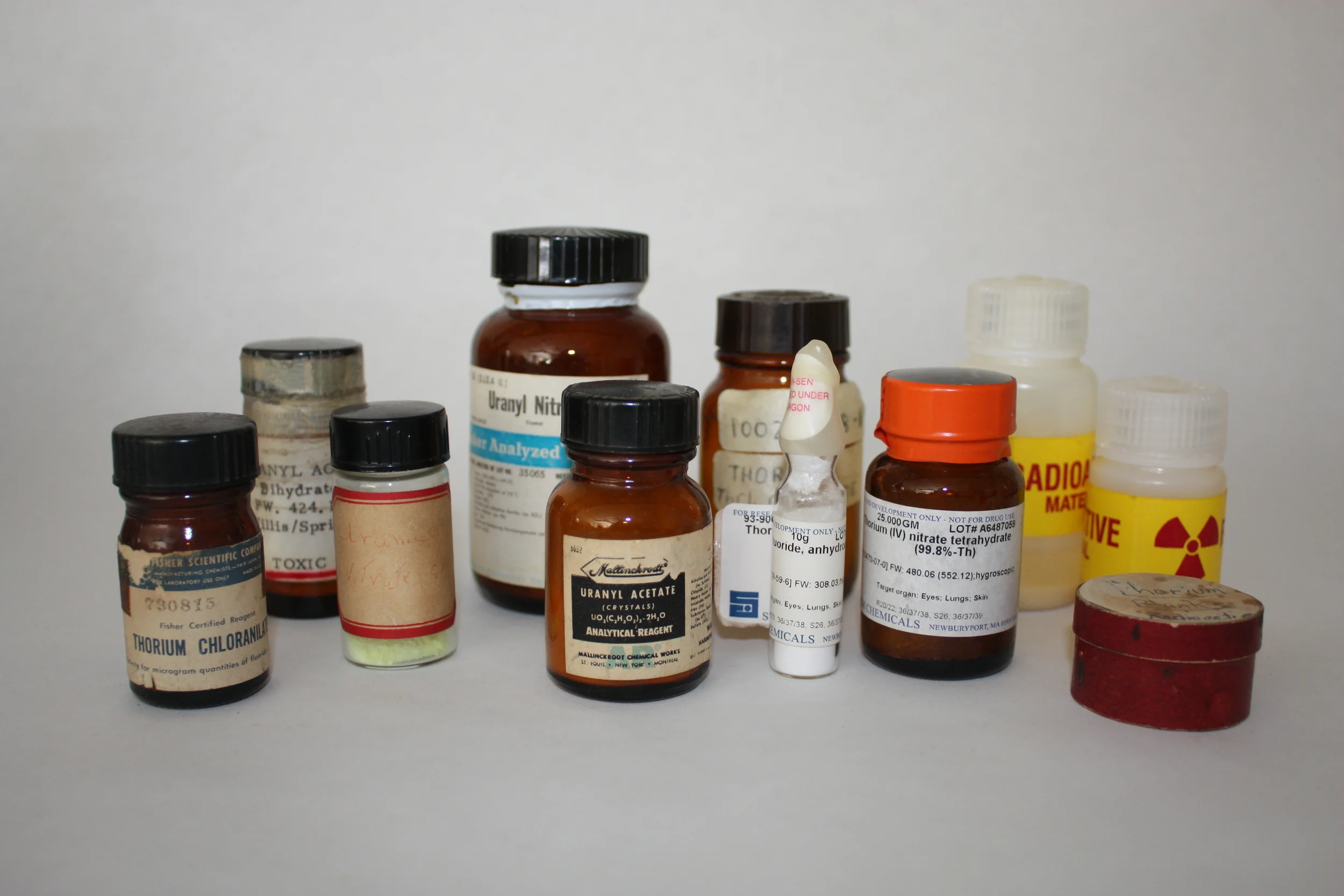the Chemistry of Uranium
Uranium remains one of the most fascinating elements on the Periodic table. The heaviest one found naturally in large quantities distributed throughout Earth's crust, it has no stable isotopes. Even so, it stays around long enough after being synthesized during the death of a massive star that we are left with significant quantities on our planet today. Uses of Uranium date back to ancient times when minerals of Uranium were used as an ingredient first in paints, and later as an additive in glass and ceramic glazes- these applications actually predate its formal discovery in 1789.
It wasn't until the discovery of fission in the late 1930s that Uranium would find its most important use, becoming the most important element to the new Atomic Age. In my earliest nuclear chemistry experiments, this element was stable and abundant enough that I could test out techniques for handling radioactive materials, and start practicing the extraction and manipulation of elements at the bottom of the Periodic Table. To start, I needed to go a hunt in the desert:
The Oxides:
The oxides of Uranium represent the most stable uranium species and were a natural starting point in many of my chemistry experiments with this element. To obtain Uranium from ores, I first prospected for natural deposits of the element. These ores typically contain either primary or secondary uranium mineralization consisting of Uranium Dioxide (UO2) in the case of Uraninite and Pitchblende, or complex Uranium Phosphate and Vanadate minerals in the case of the Autunite, Torbernite, Carnotite, and others described elsewhere on this site.
To extract the Uranium from the rock an acid or base can be used; I tended to use a carbonate leach. Sodium Carbonate will leach the Uranium (VI) in the form of Uranyl (UO2) ions into solution. From this point Ammonia or Hydrogen Peroxide can be used to produce a mill product, otherwise known as "yellowcake". The ammonia route produces an Ammonium Diuranate yellowcake which can be calcined to produce U3O8. However, the peroxide precipitation route is favorable due to its selectivity. Uranium Peroxide (UO4) is one of the few insoluble peroxides we know of and because of this, it removes many other transition metals that may be present in the leachate solution. UO4 is also a true lemon-yellow "yellowcake," and while a strong oxidizer it can be calcined, driving off an oxygen atom to produce the more stable Uranium Trioxide, UO3. This UO3 makes a convenient feedstock for other Uranium chemistry experiments. Below are images of these different Uranium Oxides.
The Fluorides:
Fluorides of Uranium including Uranium Tetrafluoride and Uranium Hexafluoride represent important Uranium compounds in the nuclear fuel cycle. Uranium Tetrafluoride (UF4) is the feed material into the Ames Process. Developed during the Manhattan Project by Canadian chemist Frank Spedding, by combining UF4 with an Alkaline Earth Metal (typically Magnesium or Calcium), the fluoride can be reduced to high purity metal, which owning to its density settles in the bottom of a specially engineered 'bomb' used to conduct the pyrometallurgical process. UF4 is also an intermediate step in the production of Uranium Hexafluoride (UF6). UF6 has been the preferred feedstock of Uranium Enrichment processes since the Manhattan Project due to its favorable boiling and freezing points, ease of production, and the mono-isotopic nature of the Fluorine component of the molecule.
Fluorine, owning to its high electronegativity position on the upper-right hand side of the Periodic Table, is the most reactive element on the periodic table. There exists very few materials that can resist attack from Fluorine and its derivatives (ie. HF) and it is an extremely hazardous element in contact with the human body in these forms. Extreme caution had to be taken when working with this element.
Uranium Tetrafluoride, UF4:
Uranium Hexafluoride, UF6:
As we continue to march up the periodic table, we enter the domain of elements discovered not first discovered in nature, but rather the laboratory. Next let’s take a look at the 94th element, Plutonium.
Additional Reading:
Prospecting for Uranium and Thorium
Uranium Chemistry My good friend Carl Willis has a complete breakdown on the extraction and synthesis of Uranium compounds using household chemicals and techniques.
